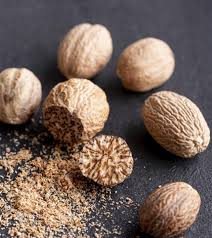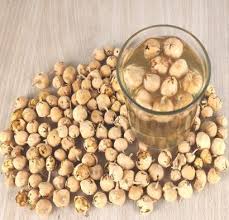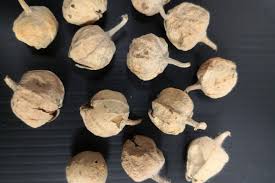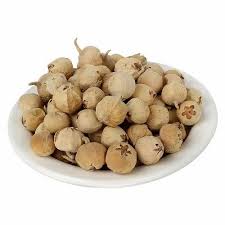
Environmental Benefits of Growing Paneer Dodi
In the world of herbal healing, Paneer Dodi (Withania coagulans) is highly celebrated for its natural ability to regulate blood sugar, detoxify the liver, and promote vitality. But beyond its medicinal uses, this humble plant holds immense environmental value that is often overlooked.
At Dirghaanshi, where we focus on holistic wellness rooted in natural remedies, it is essential to highlight how cultivating medicinal herbs like Paneer Dodi contributes not only to personal health but also to the health of our ecosystem.
From improving soil quality and conserving water to restoring biodiversity and supporting sustainable agriculture, growing Paneer Dodi offers several ecological benefits. In this blog, we explore how embracing this powerful herb can promote green farming, rural prosperity, and a healthier planet.
🌱 Long Description
🌾 What is Paneer Dodi?
Botanical Name: Withania coagulans
Common Names: Paneer Dodi, Paneer Phool, Indian Rennet
Family: Solanaceae
Type: Medicinal shrub
Native to: India, Pakistan, Afghanistan
It’s a drought-tolerant herb that thrives in arid and semi-arid regions. Its fruits (dried berries) are widely used in Ayurvedic and traditional remedies for managing diabetes, detox, and inflammation.
🌍 Top Environmental Benefits of Growing Paneer Dodi
✅ 1. Promotes Sustainable Farming in Arid Regions
Paneer Dodi grows best in dry, rocky, and nutrient-deficient soil where most commercial crops fail. This makes it an ideal choice for sustainable farming in:
Rajasthan
Madhya Pradesh
Gujarat
Haryana
Bundelkhand region
Benefits:
Requires minimal irrigation
Grows in non-arable, low-fertility soils
Does not need synthetic fertilizers or pesticides
Supports organic and low-input farming models
By replacing water-guzzling crops with herbs like Paneer Dodi, farmers can conserve water and reduce chemical pollution.
✅ 2. Helps Combat Desertification and Soil Erosion
Paneer Dodi’s deep-rooted structure binds the soil and prevents erosion, especially in regions prone to desertification and wind-blown sand.
How it helps:
Protects topsoil in semi-arid climates
Retains soil moisture and structure
Improves carbon retention in the soil
Prevents land degradation in drought-hit areas
For communities near desert fringes, cultivating Paneer Dodi acts as a natural soil stabilizer.
✅ 3. Boosts Biodiversity and Native Plant Revival
Paneer Dodi belongs to India’s native herbal ecosystem. Growing it supports the revival of native plant species that have been threatened by monoculture farming and urbanization.
Ecological benefits include:
Attracting local pollinators (bees, butterflies)
Providing micro-habitats for insects and birds
Preventing the extinction of indigenous plants
Creating herbal green belts in farmlands
When cultivated along with other herbal plants like Neem, Ashwagandha, Tulsi, and Kalmegh, it enhances local ecosystem diversity.
✅ 4. Reduces Chemical Load in the Environment
Paneer Dodi is naturally pest-resistant and does not require:
Chemical pesticides
Artificial fertilizers
Soil treatments
As a result, it supports organic farming, reduces groundwater contamination, and ensures cleaner air and soil.
Bonus: Herbal farming emits significantly lower carbon than synthetic agriculture practices.
✅ 5. Aids in Carbon Sequestration
Plants like Paneer Dodi can absorb carbon dioxide from the atmosphere and store it in their roots and surrounding soil.
Reduces greenhouse gas buildup
Reverses carbon footprints of farms
Restores climate balance naturally
Especially when grown on wastelands or barren plots, Paneer Dodi acts as a green buffer to protect the planet from rising CO₂ levels.
✅ 6. Ideal for Permaculture and Agroforestry
Paneer Dodi fits perfectly into permaculture models due to its:
Low water need
Compatibility with other medicinal plants
Seasonal rotation flexibility
Soil rejuvenation properties
It can be intercropped with:
Moringa (Drumstick)
Turmeric
Giloy
Lemongrass
This promotes multi-layer farming and agroforestry, creating self-sustaining herbal ecosystems.
✅ 7. Encourages Chemical-Free Herbal Industry Growth
As demand for natural products rises, herbs like Paneer Dodi become a sustainable raw material for:
Ayurvedic medicine
Herbal teas and infusions
Organic supplements
Sustainable skincare and wellness brands
When grown eco-consciously, Paneer Dodi supports green entrepreneurship and ethical herbal trade, promoting eco-conscious consumerism.
✅ 8. Reduces Water Footprint of Agriculture
Paneer Dodi requires less than 20% of the water needed for traditional crops like wheat, paddy, or cotton.
Thrives in dryland farming
Minimal need for irrigation systems
Can survive with just rain-fed water
In water-scarce districts, Paneer Dodi cultivation could save thousands of liters of groundwater annually, making it a climate-smart crop.
✅ 9. Promotes Rural Livelihoods and Eco-Jobs
Paneer Dodi’s cultivation supports tribal and small-scale farmers, especially in India’s backward or marginal farming zones.
Green job opportunities include:
Herbal seed collectors
Organic farming labor
Village-level herb processing units
Women’s self-help groups for packaging & selling
This promotes eco-friendly employment and financial empowerment in rural communities.
✅ 10. Supports Natural Pollination and Insect Life
Paneer Dodi flowers are small but attract:
Honeybees
Butterflies
Native insects
These pollinators are critical to the survival of fruit, vegetable, and seed-producing plants. Growing Paneer Dodi improves farm health by encouraging natural pollination cycles.
🌿 Paneer Dodi: A Model Plant for Regenerative Farming
Regenerative agriculture is a movement focused on healing the land while producing food or herbs. Paneer Dodi checks all the boxes:
✅ Builds soil
✅ Restores biodiversity
✅ Uses fewer resources
✅ Regenerates local economies
✅ Protects against climate change
🌱 How to Start Growing Paneer Dodi: A Farmer’s Guide
Climate: Dry or semi-arid (ideal for Rajasthan, MP, Bundelkhand)
Soil Type: Sandy loam, rocky, well-drained
Water: Rain-fed or weekly light irrigation
Propagation: Seeds or cuttings
Growing Season: Early summer or post-monsoon
Harvest Period: 90–120 days after sowing
Yield: 200–300 kg dried berries/acre (approx.)
You can also grow Paneer Dodi in home gardens, rooftop herbal patches, or balcony pots.
♻️ Dirghaanshi’s Role in Herbal Eco-Wellness
At Dirghaanshi, we believe that every herb carries a story, a solution, and a responsibility. That’s why:
We source Paneer Dodi from sustainable and tribal farmers
Encourage pesticide-free, ethical herb production
Promote ecological farming awareness through our blogs
Empower rural communities with fair-trade partnerships
When you choose Paneer Dodi from Dirghaanshi, you’re not just improving your health—you’re investing in a healthier planet and greener future.
🧾 Conclusion
Paneer Dodi is not only a powerful healing herb—it’s a silent warrior in the fight against climate change, land degradation, and rural poverty. By promoting this sacred herb in eco-farming and wellness practices, we can restore balance to nature and support ethical consumption.
Whether you’re a farmer, a wellness seeker, or an environmentalist, Paneer Dodi offers a regenerative path forward—rooted in tradition, strengthened by science, and powered by sustainability.
At Dirghaanshi, we invite you to explore this journey—where Jadi Buti meets ecology, and healing becomes holistic.










